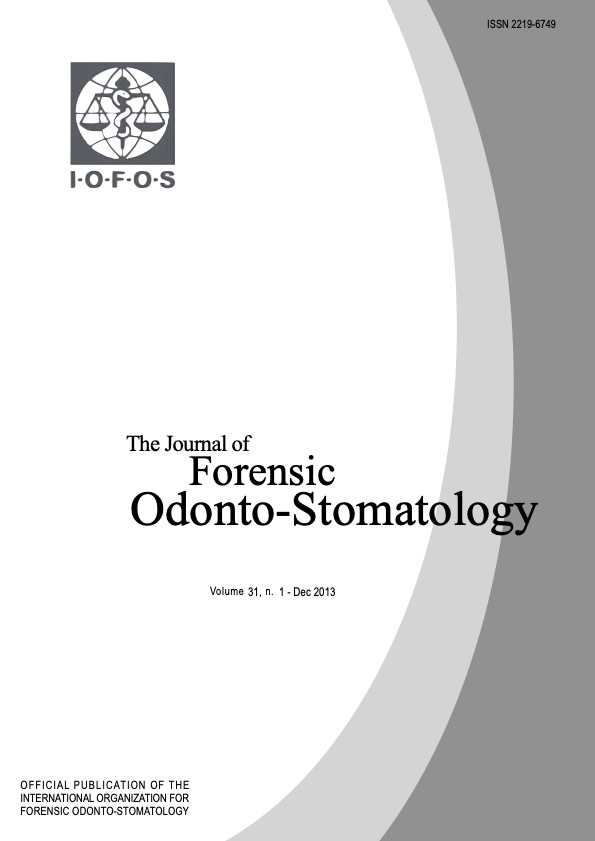Assessment of the uniqueness of human dentition
Keywords:
Forensic odontology, Dental diversity, Dental uniqueness, Dental pattern, Human identificationAbstract
Comparing antemortem and postmortem dental characteristics has been a reliable, accurate and quick human identification method. This is based on the assumption that each individual's set of teeth is unique; however, there is little evidence to support this assumption. This research aimed at determining the uniqueness of basic dental features in cohort multinational dental patients.
Dental charts were retrieved from the archive of the College of Dentistry at University of Sharjah. Dental patterns were coded into letters representing basic dental characteristics, and entered into a computer program which was written specifically for analyzing the results of this research.
Two thousand dental charts were included in this research; the average age of the sample was 31.9 years (11-87 years). The male: female ratio was 1.4:1 belonging to 55 nationalities. One thousand one hundred and fifty nine dental charts (57.95%) had absolutely unique dental patterns. The remaining charts (n=841 (42.05%)) were found to have identical patterns with others, the most common of which was "all virgin" teeth (n=482 (24.1%)). Introducing a single dental modification dropped this percentage to 1.05%. This percentage has further narrowed down to 0.7% when sex variable was introduced to the comparison.
The results of this research support the assumption that dental characteristics show diversity that is useful for human identification, even when those characteristics are recorded in their simplest forms.

